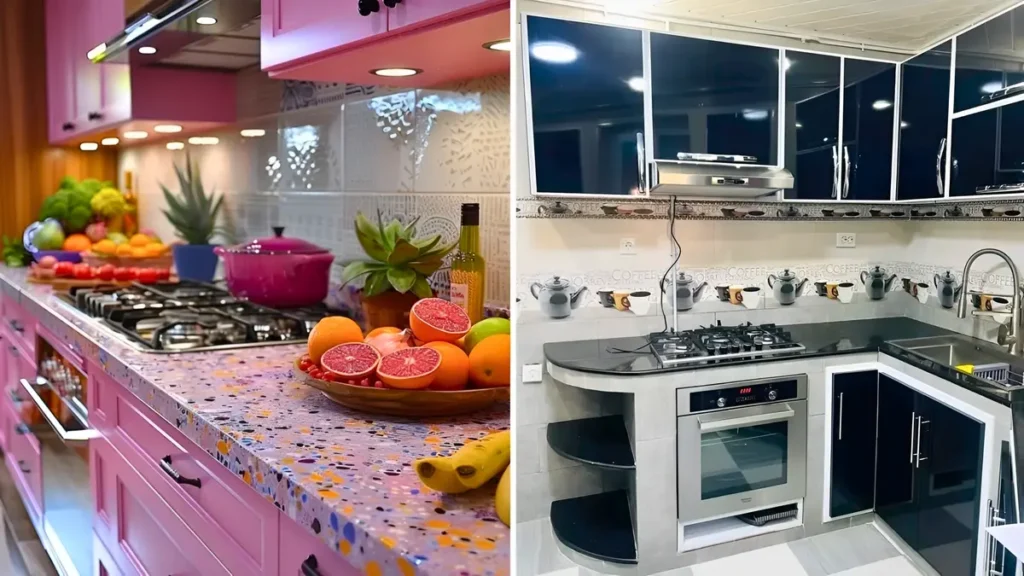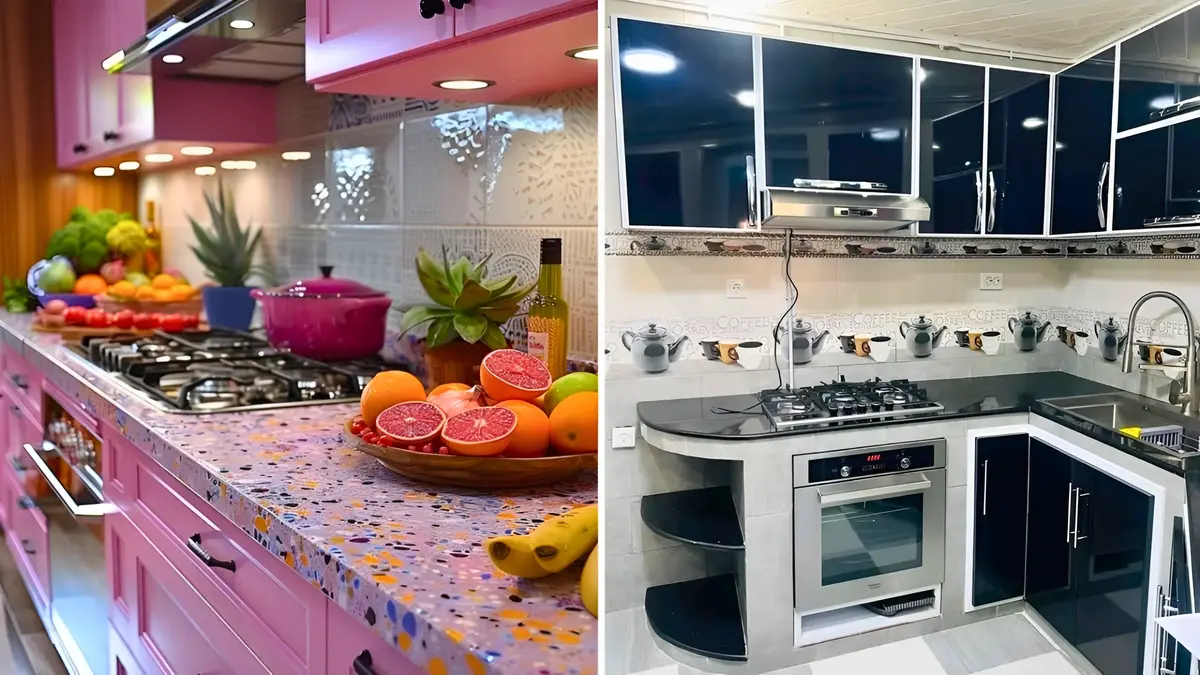Designing a modular kitchen in 2025 is more than just picking cabinets and countertops. It’s about blending aesthetics with functionality, technology with comfort, and personal taste with practical design.
Whether you’re renovating your kitchen or building a new one, there are crucial elements you shouldn’t overlook. Here’s a comprehensive guide to ensure you cover all the essentials when planning your modular kitchen.

Understand Your Kitchen Layout
Before diving into materials and finishes, identify the layout that suits your space and lifestyle. Whether it’s an L-shaped, U-shaped, galley, island, or straight kitchen, your layout should optimize the work triangle the distance between the sink, stove, and refrigerator. A well-thought-out layout will improve efficiency and reduce unnecessary movement while cooking.
Prioritize Storage Needs
Storage is often underestimated in kitchen planning. Consider your cooking habits and the types of utensils, appliances, and pantry items you use. Incorporate a mix of drawers, cabinets, tall units, pull-outs, and corner solutions. Overhead cabinets can be extended to the ceiling for additional storage, especially if your kitchen space is compact. Don’t forget internal organizers they make a massive difference in keeping things accessible and tidy.
Focus on Lighting and Ventilation
Good lighting transforms how your kitchen looks and functions. In 2025, layered lighting is key use a combination of ambient, task, and accent lighting. Under-cabinet lights are great for countertops, while pendant lights above the island or breakfast counter add both style and function. Ventilation is equally important. A powerful, silent chimney or range hood and windows for cross-ventilation ensure your kitchen remains fresh and odor-free.
Invest in Quality Materials
Materials matter not just for the look, but also for durability and ease of maintenance. For cabinets, consider marine plywood with laminate or acrylic finish for water resistance. Quartz, granite, or solid surfaces are popular choices for countertops due to their strength and low maintenance. Avoid glossy finishes on the floor, as they tend to get slippery. Always choose materials that suit your usage and climate.
Choose the Right Appliances Early
Appliances shouldn’t be an afterthought. Plan for them in the early stages so that cabinetry and electrical points can be customized accordingly. Consider built-in ovens, dishwashers, induction cooktops, and smart refrigerators based on your cooking style and kitchen space. In 2025, energy-efficient and IoT-enabled appliances are becoming the norm, offering better control and functionality.
Think About Ergonomics
Ergonomics isn’t just a buzzword it plays a vital role in how comfortable your kitchen is to use. The height of countertops, placement of appliances, and accessibility of storage units should match your physical needs. For instance, drawers are often easier to access than deep cabinets. Soft-close mechanisms, handleless drawers, and motorized shutters are becoming more common and user-friendly.
Don’t Skip a Waste Management System
A smart waste segregation system is no longer optional. Modern modular kitchens integrate wet, dry, and recyclable bins neatly inside pull-out drawers. This not only keeps your kitchen cleaner but also supports sustainable living practices. You can even consider under-sink garbage disposal systems or compactors if your local infrastructure supports them.
Use Technology to Your Advantage
Smart kitchens are growing rapidly, and 2025 brings even more intelligent options. From app-controlled lighting and voice-activated assistants to built-in screens for recipes and video calls, tech integration is transforming kitchens. Even cabinet lighting, faucets, and coffee machines can now be synced with your smart home system for added convenience and a futuristic touch.
Plan for Power and Plumbing Points
Underestimating electrical and plumbing needs is a common mistake. Plan for sufficient sockets near countertops, in drawers for charging gadgets, and inside cabinets for appliances. Make sure water outlets and drains are planned according to the sink and dishwasher locations. Consider USB charging ports and surge-protected outlets for added safety and modern utility.
Personalize Your Design
A modular kitchen doesn’t mean a cookie-cutter look. Personalization is key. Use color palettes, backsplashes, and finishes that reflect your taste. Open shelving, glass-front cabinets, or statement hardware can elevate the design. In 2025, textured finishes, earthy tones, and natural materials are trending, making kitchens look warm and inviting while remaining functional.
Leave Room for Movement
Even the most beautiful kitchen can be frustrating if it’s cramped. Leave at least 3 to 4 feet of space between counters for free movement. In island kitchens, ensure there’s enough space to navigate easily around all sides. If your kitchen is open-plan, think about how it connects visually and practically to adjoining spaces like dining or living areas.
Don’t Ignore Future-Proofing
Your needs today might not be the same five years from now. Whether it’s a growing family, evolving dietary habits, or a change in cooking frequency, future-proof your kitchen to adapt to these changes. Opt for modular systems that are easy to upgrade, rearrange, or expand. Choose timeless designs over passing trends, and keep some storage and space free for future additions.
Final Thoughts
A well-planned modular kitchen in 2025 goes beyond surface-level aesthetics. It’s a careful blend of technology, convenience, functionality, and personal style. When you take time to focus on these essential elements from layout and storage to ergonomics and future readiness you’re not just building a kitchen. You’re creating a space where everyday moments turn into lasting memories. So before you sign off on the final design, revisit these 12 points to ensure you haven’t skipped anything essential.
Disclaimer: This content is for informational purposes only and does not replace professional advice. Readers should consult qualified experts before making decisions based on the information provided. Accuracy is not guaranteed.
